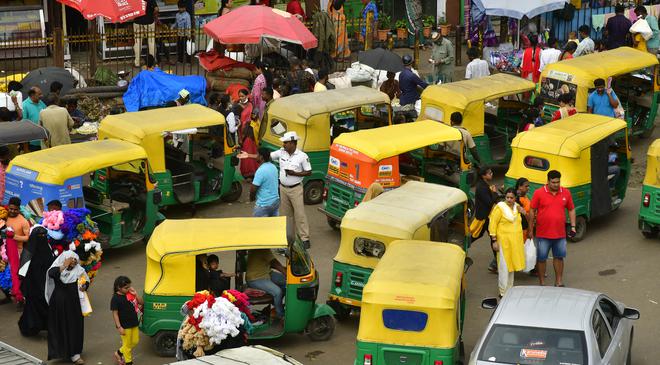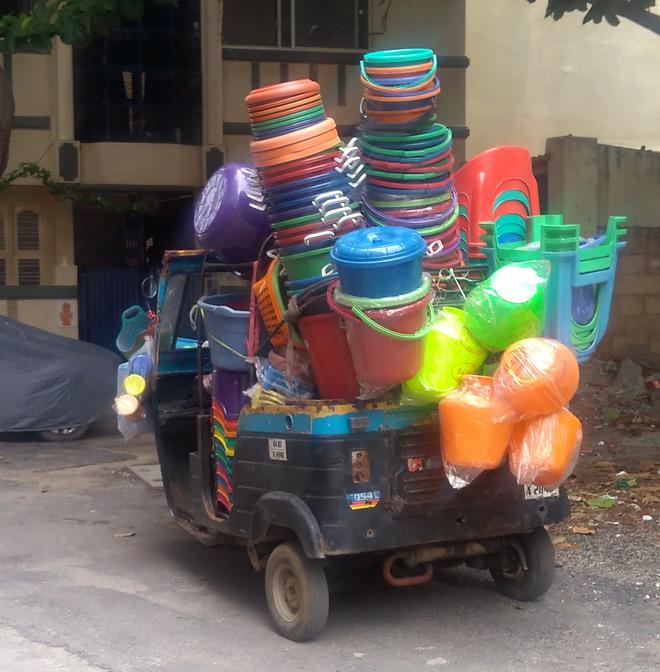

The dual utilisation of auto rickshaws – to carry passengers and freight – could increase the earnings of auto drivers by 15% and cut logistical costs for Micro, Small and Medium Enterprises (MSMEs), says a new research study conducted by World Resources Institute (WRI) India in five cities of the country. The research has also said that optimised use of passenger auto rickshaws for cargo purposes could potentially reduce CO2 emissions by 51.5% on every trip.
For the paper titled ‘Assessing the Viability of Using Autorickshaws for Urban Freight Delivery in India,’ WRI sampled a total of 1,388 respondents which included 608 supply-side three-wheeler autorickshaw drivers, 338 demand-side MSMEs, and 442 retailers, dealers, distributors in Bengaluru, Delhi, Hyderabad, Lucknow and Pune.
When auto drivers were asked by the researchers if they made dual utilisation trips in a day, 72% of them said that they did. The percentage of drivers who said that they did dual use trips was highest in Bengaluru (78%), followed by 76% in Hyderabad, 75% in Delhi, 72% in Pune and 55% in Lucknow.
“Potential reasons (for relatively low share in Lucknow) could be the predominance of other affordable micro-mobility options, like the ubiquitous hand-drawn carts and cycles, used for transporting goods over short distances,” the report which was released on Friday said.
While a greater share (57%) of the surveyed drivers said that their net operational time was around 9-12 hours, their average daily utilisation of auto rickshaws was lower with two to four hours of downtime, the report said. Hence, it suggested that this downtime, essentially non peak hours, could be put to alternate use to increase the driver’s income. The report said that based on limited surveys, it was estimated that with dual utilisation, drivers’ income could be increased in the range of 15% and 60%.
With the daily commercial deliveries in the country expected to grow 40% annually by 2025 (according to GLG Insights 2021), the report highlights the need to devise a framework which ensures that delivery of goods in every load range is essential. It has also been identified in the report that there is a lack of vehicles which can carry a 30-350 kg payload currently.
“Two-wheelers are agile but not suitable for carrying heavy freight. Meanwhile, three- and four-wheeled cargo vehicles, with a carrying capacity of 400 to 700 kg, end up getting underutilised as they are used to carry smaller payloads. Three-wheeler passenger autorickshaws can step in to fill this gap. They fare better than other micro-mobility modes in carrying heavier freight, as they have the flexibility and maneuverability of a two-wheeler that enables navigating crowded narrow streets and are designed to carry payloads of up to 300 kg,” the report said.
The report suggests that states need to consider enabling hybrid usage of autorickshaws instead of the current method where three-wheeler cargo vehicles operate under goods carriage permits and passenger autos under contract carriage permits.
Rohan Rao , Program Manager, Electric Mobility, WRI India and the lead author of the paper, said “this working paper lays the groundwork to enhance awareness on the concept of dual use of three-wheeler autorickshaws for urban freight operations and provides initial solutions for its implementation. However, there is room for further study, especially regarding safety parameters, the design of autorickshaws, and exploring other micro mobility options to facilitate goods transportation.”







